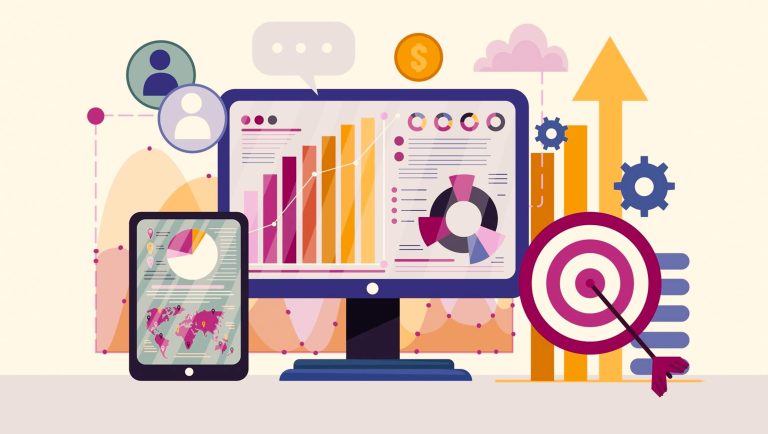A portmanteau combining the words Marketing and Technology, MarTech describes one of the greatest paradigm shifts in the history of marketing: the arrival of data-driven technology platforms. Over the past two decades, tech went from playing a peripheral role in Marketing to becoming an integral part of all Marketing processes. In essence, Marketing today is MarTech. Martech helps marketers address audiences that are more informed, tech-savvy, and connected than ever before.
What is the MarTech opportunity?
As of January 2019, there are 4.39 billion internet users, 3.48 billion of whom use social media. These numbers are set to increase at an exponential rate. Over the next decade, MarTech will enable marketers to reach out digitally to the vast majority of the world’s population. The numbers say it all. Today, MarTech is no longer optional, whether you’re a small business or a Fortune 500, a digital-first firm, or engaged in the core sector. Everyone needs to leverage MarTech to reach out to tomorrow’s audiences, today.
Today’s users digitally engage with brands at every step of the user journey, over multiple platforms, multiple devices, and a range of formats.
It’s a good idea, then, to take a close look at some of the key emerging trends in MarTech. Let’s explore where MarTech is headed this decade:
Personalization: Marketing for the “I” Generation
Over the past years, businesses have gained access to an immense quantity of detailed consumer data. This has enabled Personalized Marketing on a never-before-seen scale. Many of the digital platforms that consumers use, from phones to tablets to laptops, are inherently personal devices. The device ID and other identifiers help firms identify individual users and monitor their preferences over time. This information is then leveraged to craft templatized ads that are unique to each user.
Over the next couple years, we expect the depth and breadth of personalization to increase significantly. Businesses will not only be aware of users’ prior preferences: predictive analytics will help them serve ads for products that users didn’t know they wanted before. Personalization will also make ad-supported experiences, such as freemium games, feel less intrusive and alienating. AI solutions, such as Samsung’s Neon avatars, have the potential to elevate this further: users will feel like they’re having conversations with brands, instead of staring at ads.
Data: Opportunities and Challenges
Data is central to the MarTech paradigm. The wide availability of vast quantities of user data has allowed marketers, for the first time, to make scientific, data-driven decisions with easily measurable outcomes. Over the next decade, we expect all firms, large and small, to collect an increasing quantity of increasingly specific data about their users. Firms will gain a fine-grained understanding about customer product preferences, income levels, interests, and far more. Advances in Artificial Intelligence will enable predictive analytics tools to deliver actionable insights valid down to the level of individual customers.
Data will become immensely valuable in the years to come. However, it brings its own set of challenges with it. Firms will need to architect infrastructure for data processing and management. Building data management platforms from scratch may prove difficult. Many firms, especially smaller ones, may opt for third-party Cloud-based SaaS solutions to manage their data. This has implications for data privacy: who owns user data? Where is it stored? And who is it available to?
Data privacy issues have tangible implications for businesses: As governments and individuals become increasingly cognizant of the sheer quantity of data being collected, legislation like the GDPR will increase the compliance burden. Going forward, firms will need to do serious introspection when it comes to data strategy: Do they have a strategy in place? Is it transparent? Is it compliant?
Read More: How to Deliver the Experiences the CMO Craves Through the Robust Systems the CIO Needs
The User Journey: Leveraging Multiple Formats and Platforms
In the past, digital was seen as just one part of the Marketing mix because users would only interact with digital platforms at certain points in their user journeys. Things have changed. Today’s users digitally engage with brands at every step of the user journey, over multiple platforms, multiple devices, and a range of formats. An in-app video ad could lead the user to a brand’s launch page, from there to customer forums, and from there to a digital shopfront. This journey could start on the user’s mobile phone, continue on their desktop, and end at a digital kiosk.
A key imperative for brands is to ensure that this journey is as seamless and pain-free as possible. Native ads, mobile friends interfaces, and cross-platform support will ensure that customers have a comfortable, consistent experience every step of the way.
IoT: One Platform, Many Formats
Over the coming decade, the Internet of Things (IoT) is set to become a platform of choice for customers. IoT devices, from smart home appliances to store kiosks to digital banners will ensure personalized customer experience in both public and private spaces. To best leverage IoT opportunities, brands will need to ensure consistent messaging across a whole range of disparate IoT formats.
Digital Marketing: From Tactic to Strategy
In earlier times, digital was seen as just one part of the marketing mix. Tactical approaches to digital – a web banner here, a YouTube video there – were expected to complement conventional Marketing strategies. Times have changed. Users engage with digital far more often than they used to, at the expense of conventional platforms like TV, Cinema, and print media.
Even in contexts where conventional platforms are in use, digital influences how marketers use them to reach today’s audiences. For instance, while consumers continue to watch TV, OTT platforms like Netflix and Hotstar have increased exponentially in their importance. This has resulted in a gradual shift in advertising spend away from TV spots to OTT platforms.
All of this means that digital no longer makes sense as a tactic. In the years to come, digital will increasingly define overall Marketing strategies. Advertising, of course, will increasingly take place across digital platforms. However, Analytics, Support, Sales, and a whole host of other Marketing processes will also migrate to digital.
Conclusion
MarTech is the future of Marketing. And that future is digital, connected, responsive, and personalized. Over the next decade, we expect firms to leverage data-driven MarTech approaches that speak to each and every one of their customers.
At the same time, challenges and conflicts centering on data privacy and regulation will need to be addressed. Over the next decade, every firm regardless of scale or industry will need to look towards martech. The challenges are immense, but the opportunities are greater.
Read More: Why SEO Shouldn’t Be an Afterthought





















